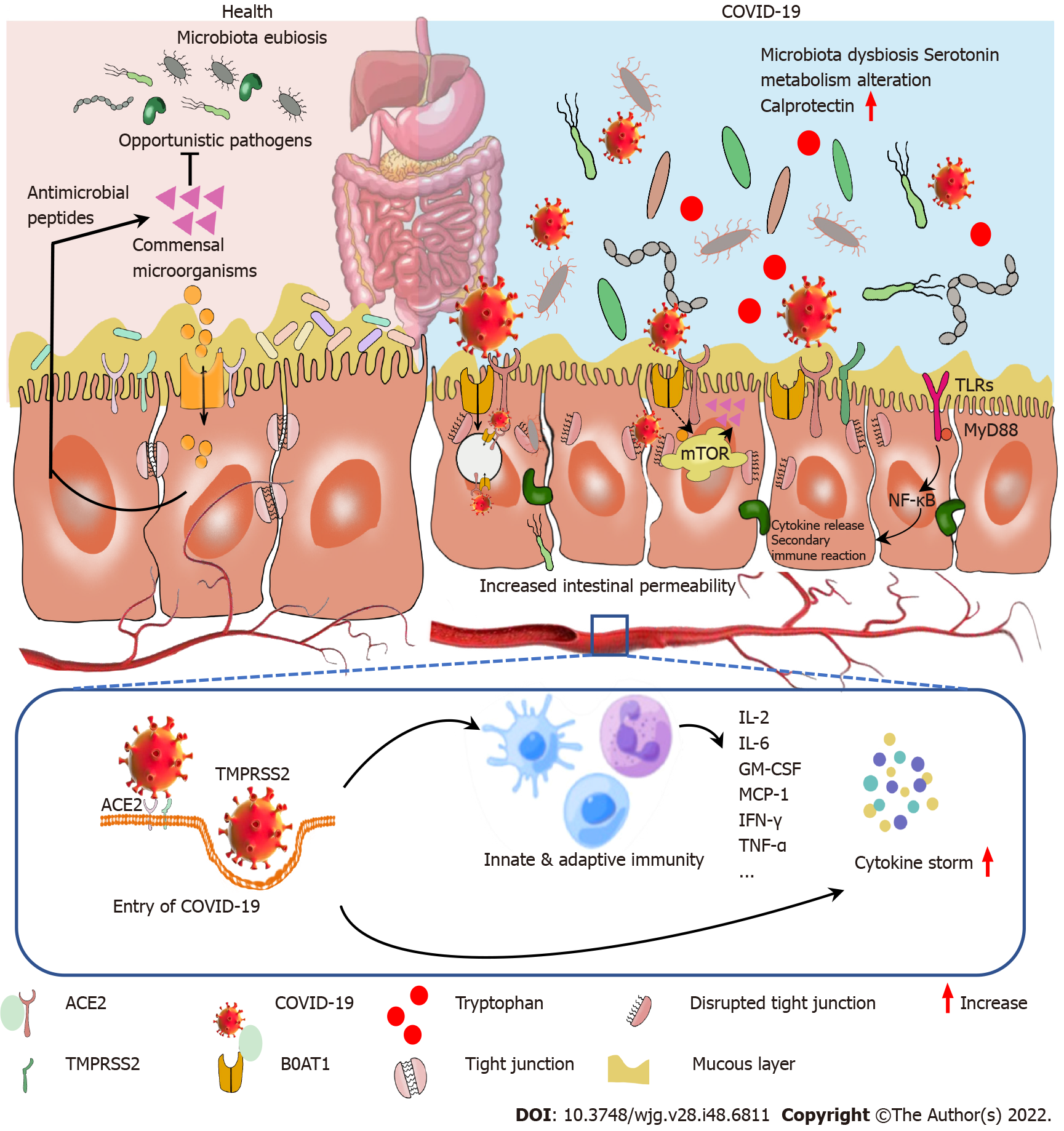Copyright
©The Author(s) 2022.
World J Gastroenterol. Dec 28, 2022; 28(48): 6811-6826
Published online Dec 28, 2022. doi: 10.3748/wjg.v28.i48.6811
Published online Dec 28, 2022. doi: 10.3748/wjg.v28.i48.6811
Figure 5 Potential mechanism of cytokine storm and secondary pathogen infection resulting in diarrhea in patients with coronavirus disease 2019.
After coronavirus disease 2019 (COVID-19) virus entry into the body, innate and adaptive immunity have been activated, followed by a cytokine storm. Gut microbiota is also disrupted by COVID-19 infection which potentially triggers cytokine storm and secondary pathogen infections. B0AT known as an angiotensin-converting enzyme-2 chaperone, mediates neutral amino acid uptake by luminal epithelial cells. B0AT substrates (tryptophan and glutamine) activate antimicrobial peptide release and promote tight junction formation, inhibit cytokine release and promote mucosal cell autophagy via mechanistic target of rapamycin signaling pathway. COVID-19 infection blocked this pathway, promoting opportunistic pathogen invasion, cytokine storm, activating toll-like receptors/nuclear factor-κB pathway and aggravated COVID-19. COVID-19: Coronavirus disease 2019; ACE2: Angiotensin-converting enzyme-2; TMPRSS2: Transmembrane protease serine 2; IL: Interleukin; GM-CSF: Granulocyte-macrophage colony-stimulating factor; MCP-1: Monocyte chemoattractant protein-1; IFN-γ: Interferon-γ; TNF: Tumor necrosis factor; mTOR: Mechanistic target of rapamycin; TLRs: Toll-like receptors; NF-κB: Nuclear factor-κB.
- Citation: Yao Y, Liu ZJ, Zhang YK, Sun HJ. Mechanism and potential treatments for gastrointestinal dysfunction in patients with COVID-19. World J Gastroenterol 2022; 28(48): 6811-6826
- URL: https://www.wjgnet.com/1007-9327/full/v28/i48/6811.htm
- DOI: https://dx.doi.org/10.3748/wjg.v28.i48.6811









